Triple S
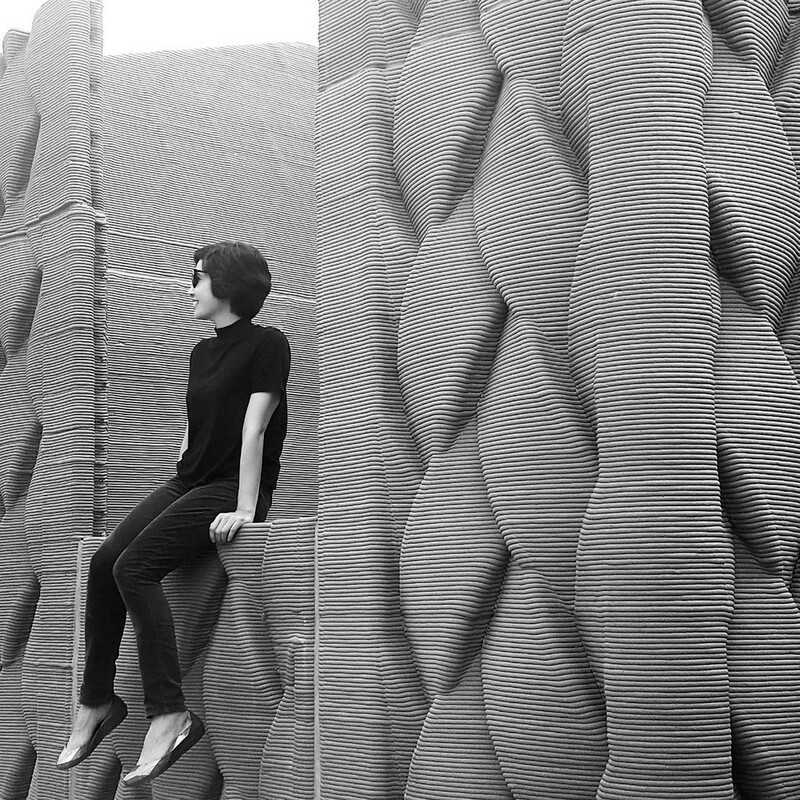
Siam Research and Innovation Company (SRI) is a Thailand-based cement manufacturer that has been developing innovations to push the limits of 3D printing in architecture. Their project ‘Triple S’ –developed in 2017– is based on traditional Thai craftsmanship to generate Surface, Structure, and Shelter in a single process; its specific artisanal form creating beautiful framework for structural purposes, easily building living spaces.
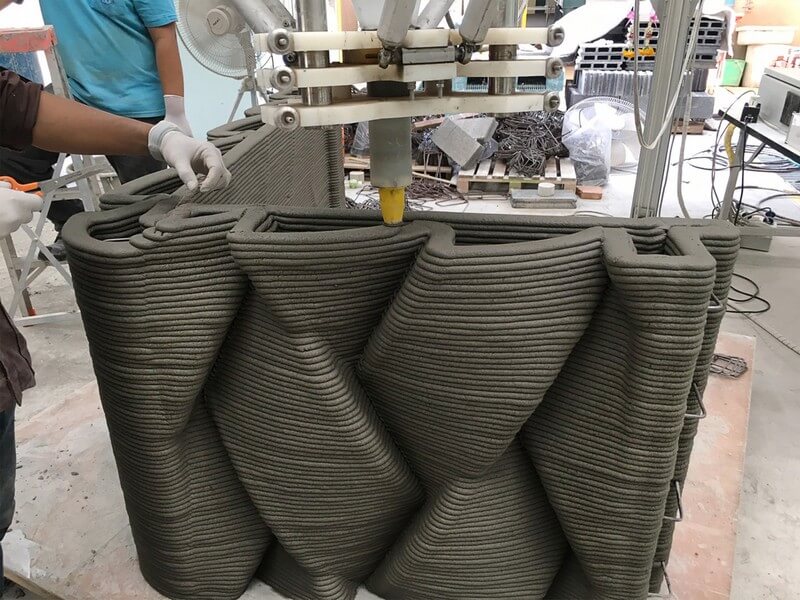
3D Concrete Printing – Triple “S” is a new evolution in 3D printing consisting of Surface, Structure, and Shelter design concepts. The size is 3.0 x 3.5 x 3.0 meters. Unlike previous developments, the design and 3D printing technology platforms work side-by-side. The advanced research of printing and materials allows the improvement of other dimensions such as structure, engineering, and architecture.
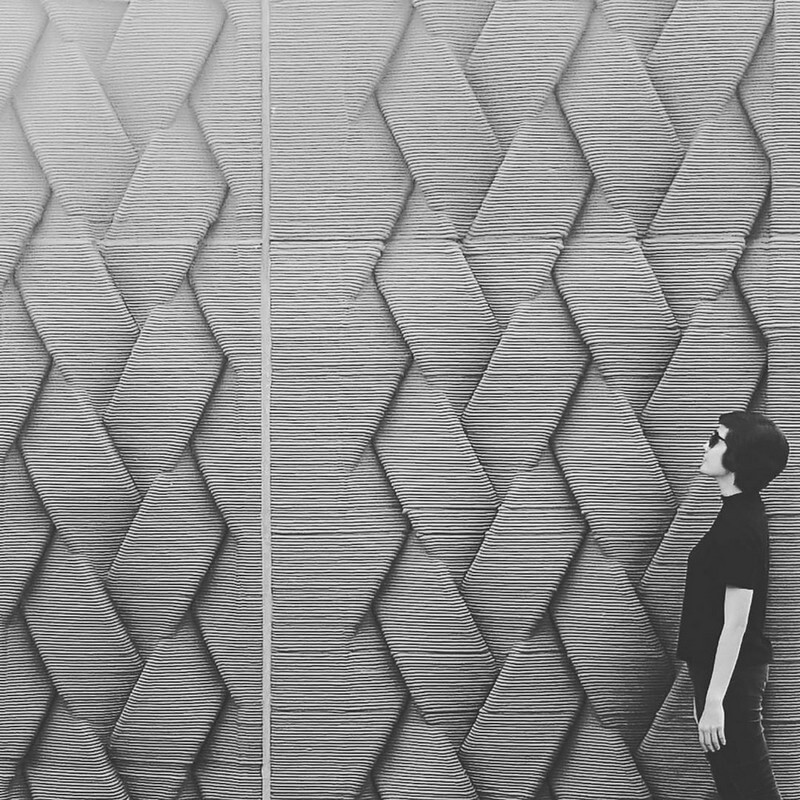
The Triple “S” represents a surface transformation on the human scale using a function of the suitable size of printing nozzle compared to the pattern scale design to formulate a new surface transformation to function – the most sophisticated design method in architecture in this 3D printing work.
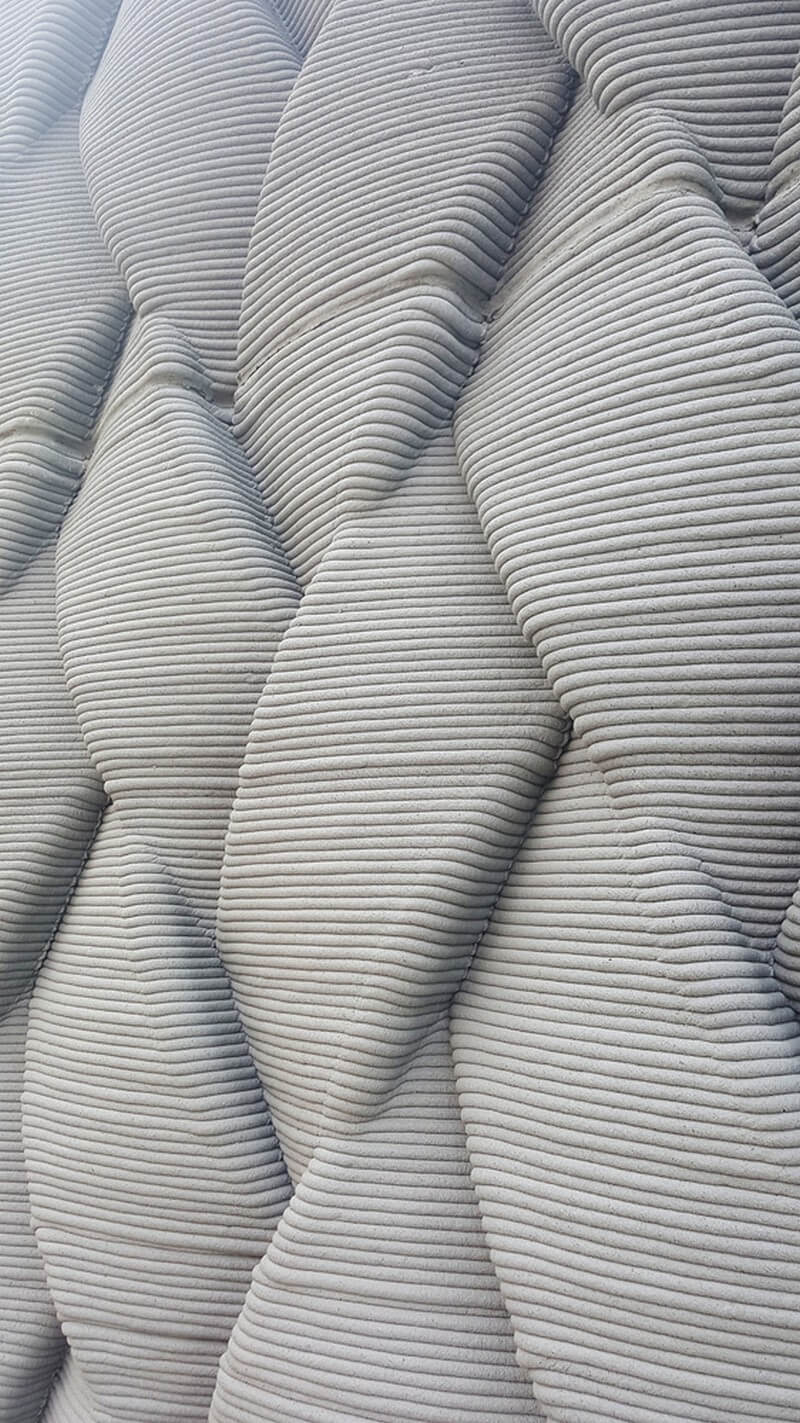
Typically, the outer surface layer and the inner truss of the 3D printing objects are included while designing. The inner truss is designed for structural purpose in order to withstand the load. The new surface transformation to function is designed to implement the outer surface layer to have the structural performance as inner truss; meanwhile, not leaving delicate and vigorous appearance from the outer surface.
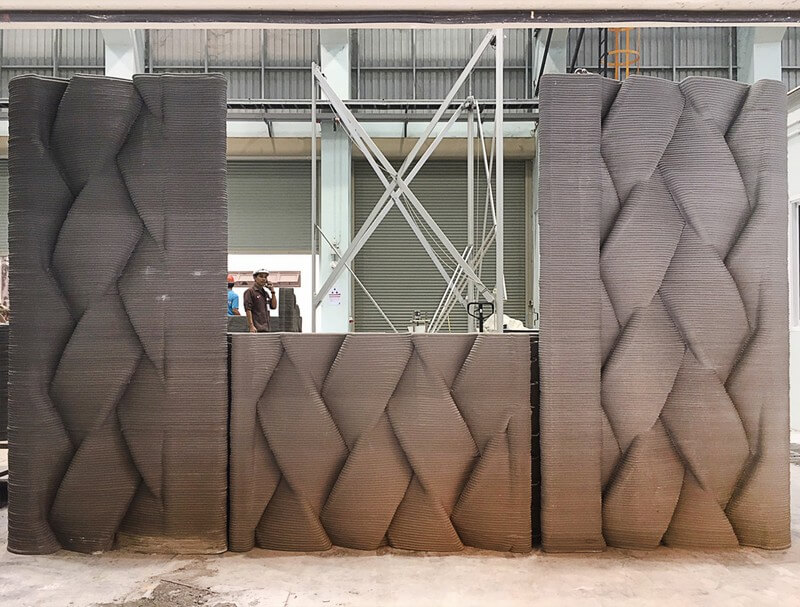
The designed surface can perform in both aesthetic and structural functions. Indeed, texture patterns developed in the Triple “S” derived from moving paths on load-bearing concrete structures. The design concept of Triple “S” derives from Thai folk handicraft creating around 250 years ago in Phra Nakhon Si Ayutthaya, the previous Thai capital.
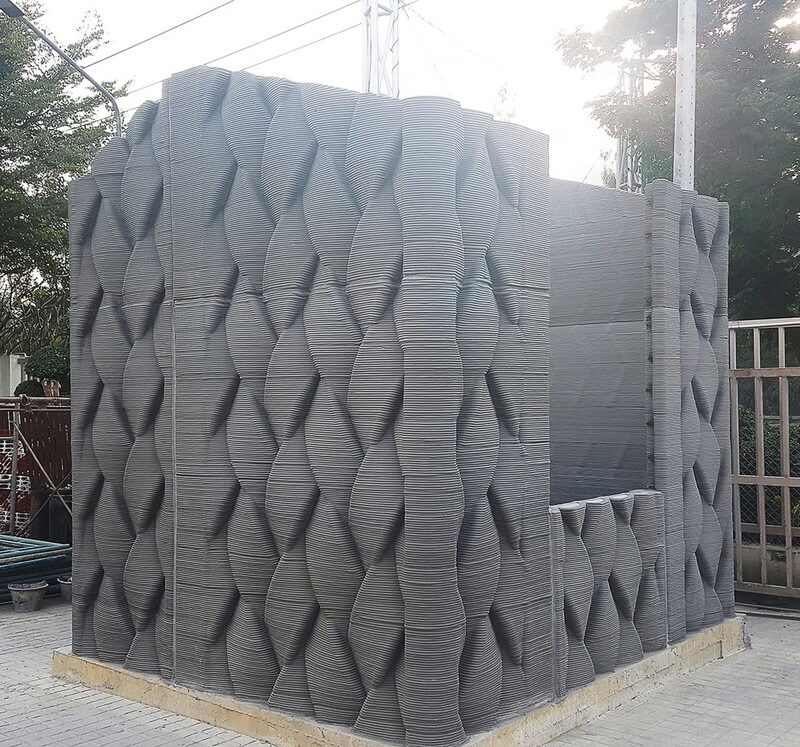
The weaving pattern is a fish-shaped ornament made of coconut leaf. The weaving pattern is designed to be modular and implement in a concrete block. The concrete is being extruded using 3D printing to increase its dimensions as its weaving appearance. After printing, the 3D printing concrete panel is fabricated with the pattern and serves as a structure for holding its weight. After fabrication, the weaving pattern of final module acts as a truss for structural purposes.
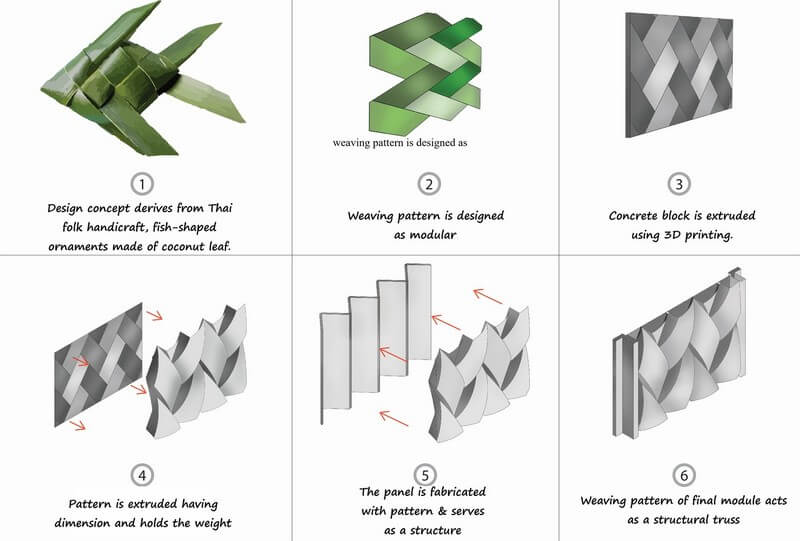




























Comments